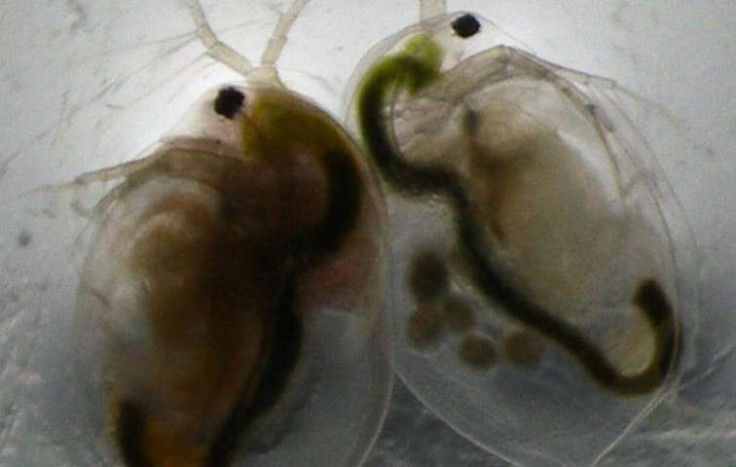Why do we have sex?
Study was conducted in water fleas, a species that can reproduce both sexually and asexually.

Many species have sex to reproduce, and scientists have now discovered that this may help future generations fight off infections. Unlike asexual reproduction, this mode of reproduction allows offspring to get genes from two parents, potentially making them better equipped to adapt to changing environments, including rapidly evolving parasites.
Asexual reproduction involves offspring being born from a single organism and inheriting the genes from that organism only. It is the mode of reproduction adopted by some animal and plant species such as mud worms, flatworms or strawberries. It is less costly than sexual reproduction, as it does not involve having to find a mate or producing males that cannot themselves bear offspring.
Most species have nevertheless adopted sexual reproduction, leaving many scientists puzzled about this great paradox of biology.
A number of hypotheses had previously been investigated, including the idea that sexual reproduction allows the purging of bad genes in a given population by allowing paternal and maternal genes to combine in offspring.
"The theory is that sex leads to bad genes ending up in some offspring and good genes ending up in others, and that bad genes are removed through selection. The problem is that this has only been shown in specific species, so the theory lacks generality", lead author Dr Stuart Auld, from the University of Stirling, told IBTimes UK.
Sex in water fleas
For this research, published in the Proceedings of the Royal Society B, the scientists worked with water fleas, a species that is very interesting because it can reproduce both sexually and asexually.
Read more:
Hormonal clues to evolutionary puzzle – why do some women have more sex when at their least fertile?
Orgasms are a currency we use to influence our partners – and they're more valuable to women
Sex with Neanderthals helped our ancestors live out of Africa
"The water flea can reproduce both ways – when times are hard and the population is under stress, it switches from asexual reproduction to sexual reproduction and hatches eggs. This has allowed us to compare offspring born from sexual and asexual reproduction in the same environment", Auld said.
"Previous studies had been able to compare distinct sexual and asexual populations and we have learnt a lot from this approach. However, populations can be different for other reasons that their mode of reproduction, so for our study, it was interesting to look at a species that could reproduce sexually and asexually".
The scientists exposed the two types of offspring to a bacterial parasite called Pasteuria ramosa, which constitutes the biggest threat to the population in its environment. They discovered that, when exposed to these parasites, sexually produced offspring were twice as resistant to infection as asexual ones.
Genetically variable offspring thus appear better equipped to escape infection from parasites adapted to infect the previous generations. The combination of genes from both parents help them resist to parasites.
These findings suggest that species' crucial need to evade infections may explain why sexual reproduction persists in the natural world – despite being costly.
© Copyright IBTimes 2025. All rights reserved.






















